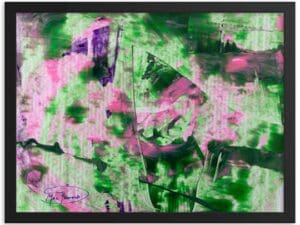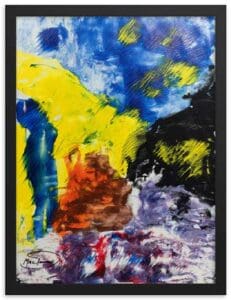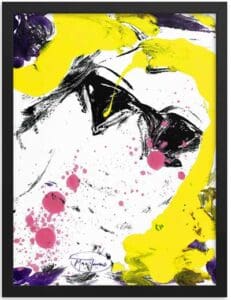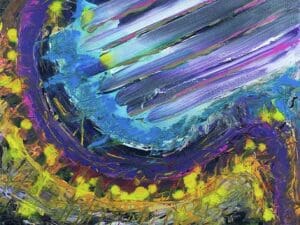Abstract art spans from pure non-representational color and form to pieces with perceptible images. Discover how both reveal emotion, structure, and imagination.
Abstract art is a fascinating and diverse realm of artistic expression. It pushes boundaries, challenges perceptions, and invites viewers into a world where creativity reigns free from conventional constraints. However, not all abstract art is created in the same way. While some abstract works rely entirely on color, form, and design with no perceptible image, others incorporate hints of recognizable subjects that connect the viewer to something tangible.
Pure Abstraction: Art Without Forms
Pure abstract art is often devoid of any perceptible imagery. Color, texture, shapes, and composition drive these works. The artist’s goal is not to depict a specific object, person, or scene but to evoke emotions, thoughts, or sensations through design alone.
Examples of this kind of abstraction can be found in the works of artists like Wassily Kandinsky or Piet Mondrian. These paintings use balance, rhythm, and harmony to create visual impact, allowing viewers to interpret the work subjectively.
In pure abstraction, meaning is open-ended. A single piece can evoke a different reaction from each viewer. This universality makes it deeply personal and universally intriguing.
Abstract Art with Perceptible Images
On the other end of the spectrum, some abstract art incorporates elements of recognizable forms. These works balance abstraction and representation, hinting at a subject while maintaining a sense of ambiguity.
Examples include:
- Abstract Flowers: These pieces might emphasize the swirling motion of petals or the vibrant interplay of colors rather than aiming for botanical accuracy.
- Abstract Landscapes: Often inspired by nature, these works use soft, blurred forms or exaggerated colors to capture the essence of a place rather than its exact appearance.
- Abstract Portraits: Faces and figures may emerge from chaotic brushstrokes or geometric patterns, offering glimpses of personality or emotion while remaining non-literal.
- Abstract Figures: These works blend human forms with dynamic, fragmented elements, creating a sense of movement or mood without relying on detailed representation.
- Abstract Objects: This category brings everyday items into the abstract realm. A chair, a vase, or furniture may be reimagined through distorted shapes, exaggerated proportions, or unconventional color schemes, creating a fresh perspective on the ordinary.
The Artistic Spectrum
Abstract art exists on a continuum, from purely non-representational to pieces that integrate perceptible imagery. Both styles offer unique experiences for the viewer. Pure abstraction invites introspection and interpretation, while abstract art with perceptible images bridges the artist’s vision and the viewer’s understanding.
Ultimately, the beauty of abstract art lies in its versatility and the infinite possibilities it offers both the creator and the observer. Whether you’re drawn to the meditative simplicity of pure abstraction or the playful hints of form and subject, abstract art reminds us that there’s more than one way to see—and feel—the world around us.
Click for more articles in All Articles.
Explore a broad array of Original Paintings, Fine Art prints, Abstract Signature shirts, and Art Gifts.
Lifetime Collector Guarantee applies to Originals and Mixed-Media works. © MacDonald Gallery, Adwin Blake, Curator.





Buying Your First Fine Art Painting: 10 Key Considerations (Beginner’s Guide)
6 Must-Know Facts About Peter Max Prints
MacDonald Painting “Two Wanted Men” to be put on Display in Columbia Studio A Lobby